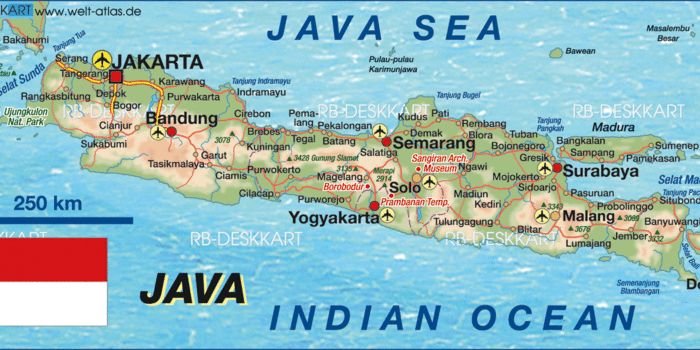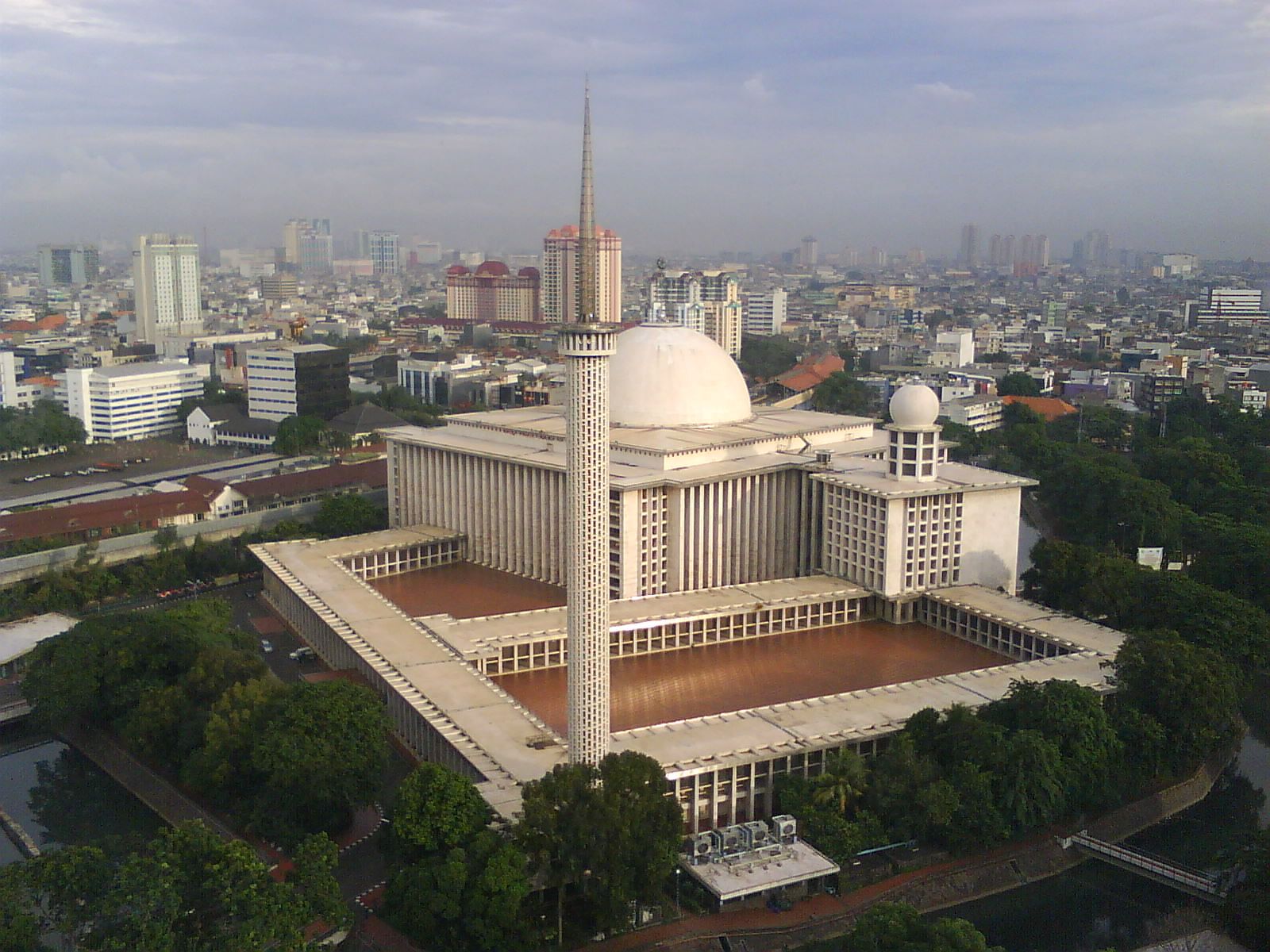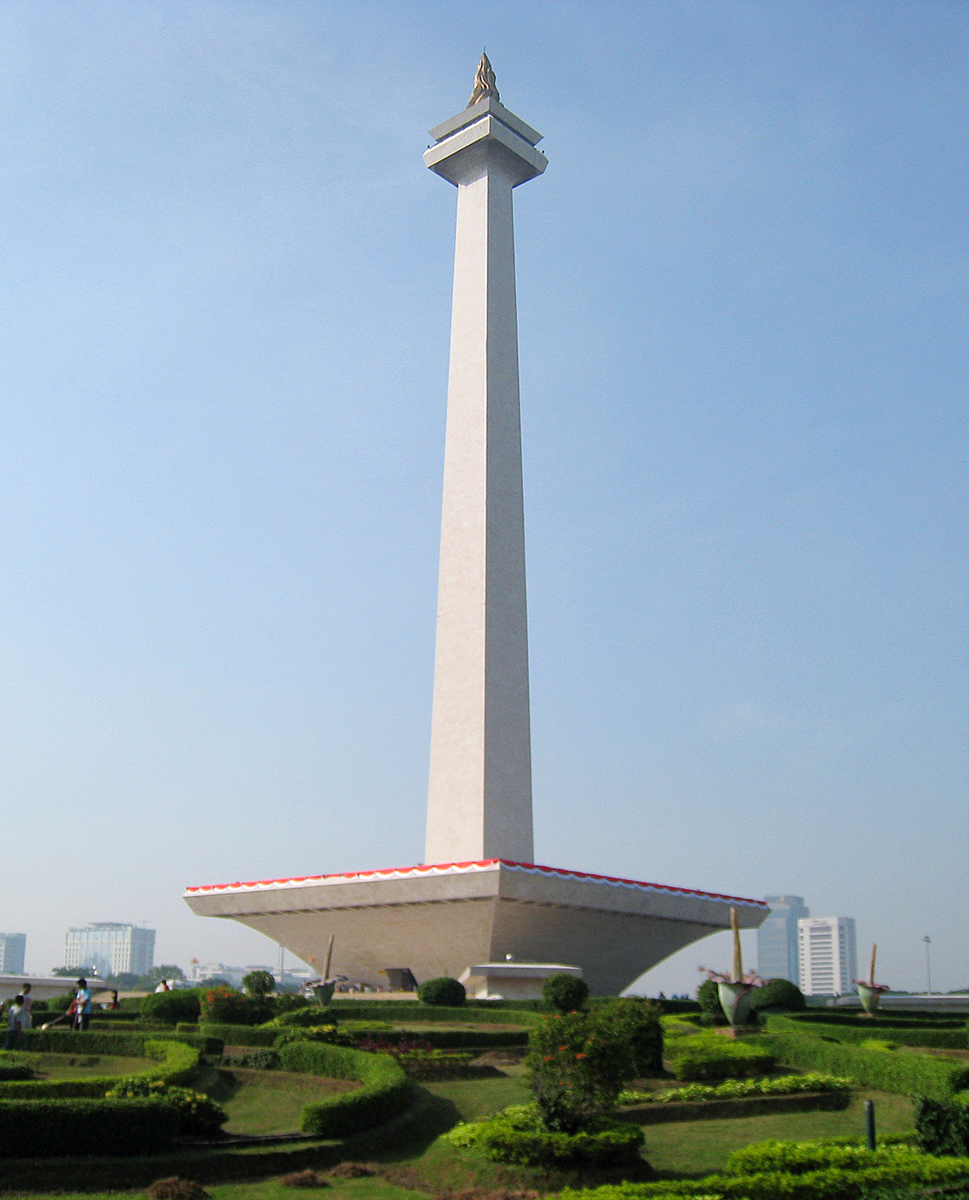
REPUBLIC OF INDONESIA

Location
Nature
Population
Tourism
Jakarta - The capital city
Jakarta - the capital of Indonesia
Jakarta is the capital of Indonesia
now. The word “now” is used because of the intention of
the Indonesian government to change the capital city of
the state. In addition, it is the most populated city in
Indonesia.
Location
Jakarta is situated on the northwest
coast of Java, at the mouth of the Ciliwung River on
Jakarta Bay, an entry poin t of the Java
Sea. It is strategically located near the Sunda Strait
(a strait between the Indonesian islands of Java and
Sumatra). The northern part of Jakarta is plain land,
some areas of which are below sea
level, and they are subject to frequent flooding. The
southern parts of the city are hilly. It is one of only
two Asian capital cities which are in the southern
hemisphere (along with East Timor's Dili). Officially,
the area of the Jakarta Special District is 662 km2
of land area and 6,977 km2 of sea area. The
Thousand Islands, which are administratively part of
Jakarta, are in Jakarta Bay, north of the city.
t of the Java
Sea. It is strategically located near the Sunda Strait
(a strait between the Indonesian islands of Java and
Sumatra). The northern part of Jakarta is plain land,
some areas of which are below sea
level, and they are subject to frequent flooding. The
southern parts of the city are hilly. It is one of only
two Asian capital cities which are in the southern
hemisphere (along with East Timor's Dili). Officially,
the area of the Jakarta Special District is 662 km2
of land area and 6,977 km2 of sea area. The
Thousand Islands, which are administratively part of
Jakarta, are in Jakarta Bay, north of the city.
Jakarta lies in a plain, ranging from
−2 to 50 metres with an average elevation of 8 metres
above sea level with historically extensive swampy
areas. Thirteen rivers flow through Jakarta. They are
Ciliwung River, Kalibaru, Pesanggrahan, Cipinang, Angke
River, Maja, Mookervart, Krukut, Buaran, West Tarum,
Cakung, Petukangan, Sunter River and Grogol River. They
flow from the Puncak highlands to the south of the city,
then across the city northwards towards the Java Sea.
The Ciliwung River divides the city into the western and
eastern districts. These rivers, combined with the wet
season rains and the shortage of drainage causes
clogging, put Jakarta at risk of flooding. The flooding
is related to climate changes.
Architecture
The buildings were influenced by a lot
of historical periods. For example, the dominant
colonial styles can be divided into three periods: the
Dutch Golden Age (17th to late 18th century), the
transitional style period (late 18th century – 19th
century), and Dutch modernism (20th century).
Most landmarks, monuments and statues
in Jakarta were begun in the 1960s during the Sukarno
era, then completed in the Suharto era, while some date
from the colonial period. Although many of the projects
were completed after his presidency, Sukarno (the first
president of independent Indonesia), who was an
architect, is credited for planning Jakarta's monuments
and landmarks, as he desired the city to be the beacon
of a powerful new nation. Among the monumental projects
which were built and planned during his administration
are the National Monument, Istiqlal mosque, the
Legislature Building, and the Gelora Bung Karno stadium.
Sukarno also built many nationalistic monuments and
statues in the capital city.
Istiqlal mosque =>

<= National Monument of Indonesia
Google Maps - Jakarta
Official site of the city